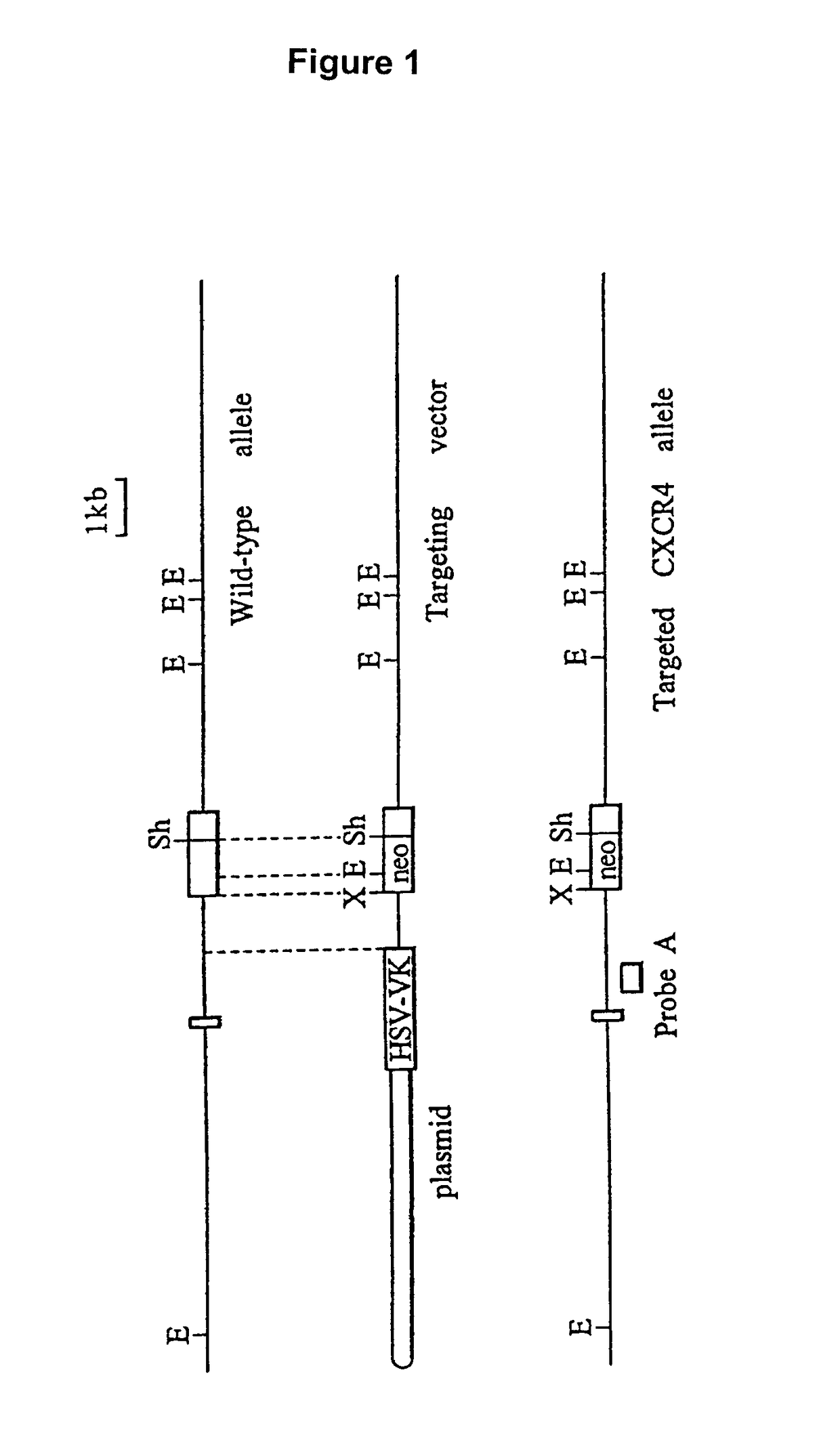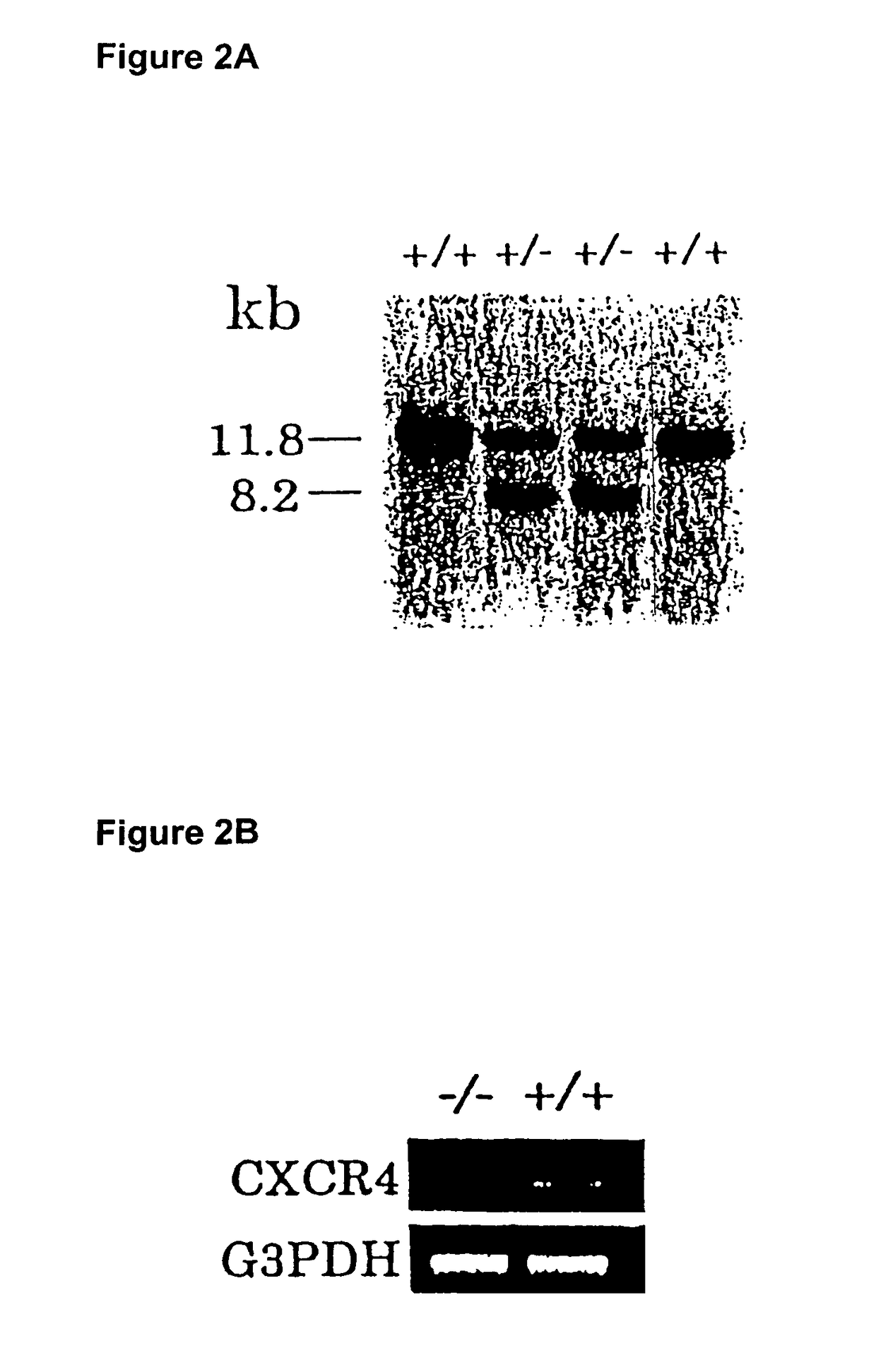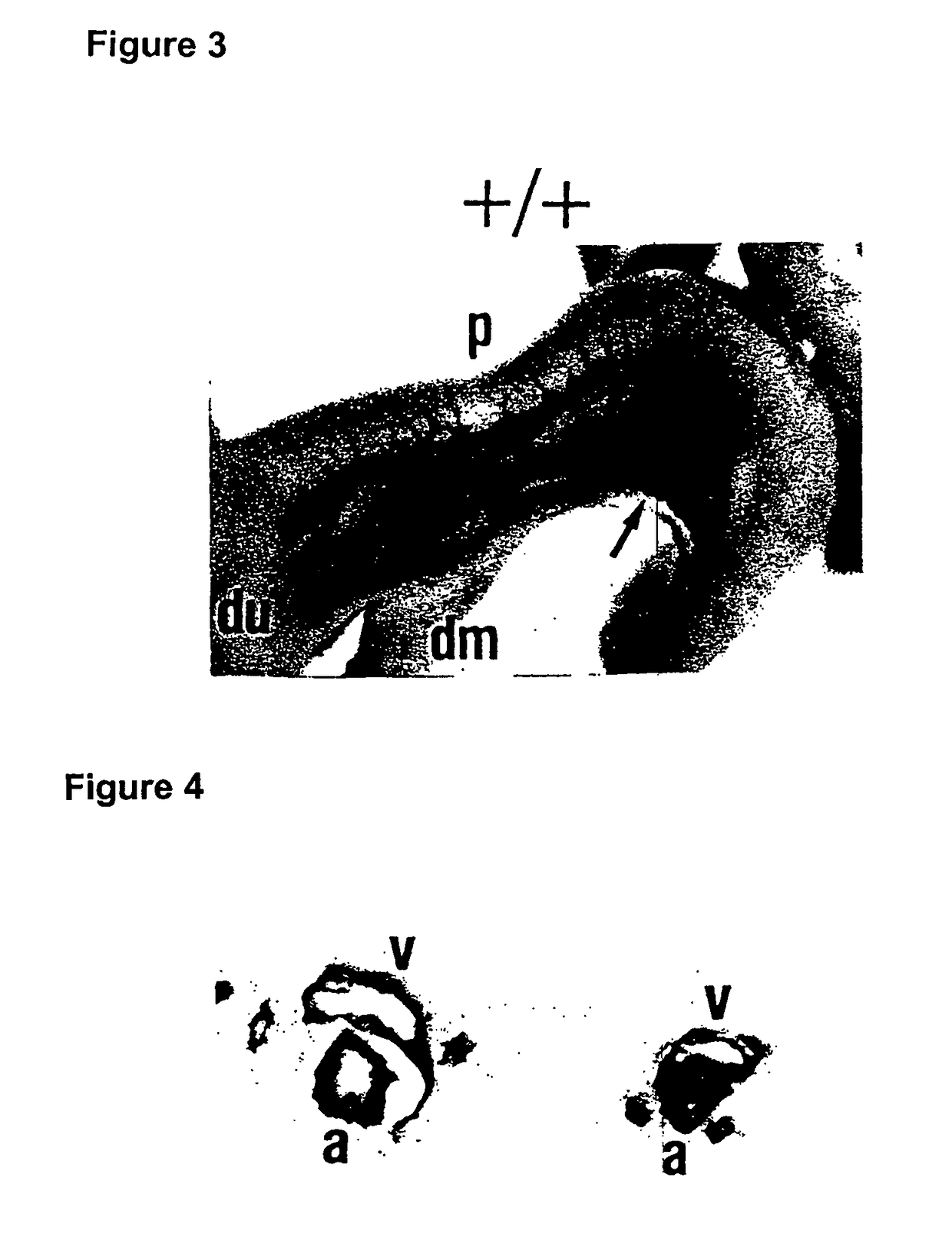Inhibiting vascularization using antibodies to CXCR4 and SDF-1
a vascularization inhibitor and antibody technology, applied in the field of new vascularization inhibitors, antisolid cancer agents, and therapeutic agents, can solve the problems of unidentified substances responsible for vascularization during organogenesis, and achieve the effect of inhibiting the proliferation, invasion and metastasis of cancer
- Summary
- Abstract
- Description
- Claims
- Application Information
AI Technical Summary
Benefits of technology
Problems solved by technology
Method used
Image
Examples
examples
Creation and Analysis of Mice Completely Lacking CXCR4
[0148]Genome DNA containing the CXCR4 locus was isolated from a murine cell line 129DNA library (STRATAGENE).
[0149]A 1.1-kb genomic fragment containing the 5′-coding region of exon 2 was replaced by the neomycin resistant gene, and the herpes simplex thymidine kinase gene was linked to the 5′-terminus.
[0150]The targeting vector was introduced into the cells on day 14.1 of embryogenesis (referred to as “E14.1” hereafter) by electroporation, and a homologous recombination was selected by the use of G418 and ganciclovir and identified by PCR.
[0151]The structure of the mutant locus and the presence of a single insert in the ES cell colony were confirmed by Southern hybridization. According to the method as described in Nagasawa, T. et al., Nature 382, 685-688 (1996), the mutant ES cell colony was used to create a mutant mouse by the injection of undifferentiated embryonic cells.
PUM
| Property | Measurement | Unit |
|---|---|---|
| Size | aaaaa | aaaaa |
| Therapeutic | aaaaa | aaaaa |
| Vascularization | aaaaa | aaaaa |
Abstract
Description
Claims
Application Information
 Login to View More
Login to View More - R&D
- Intellectual Property
- Life Sciences
- Materials
- Tech Scout
- Unparalleled Data Quality
- Higher Quality Content
- 60% Fewer Hallucinations
Browse by: Latest US Patents, China's latest patents, Technical Efficacy Thesaurus, Application Domain, Technology Topic, Popular Technical Reports.
© 2025 PatSnap. All rights reserved.Legal|Privacy policy|Modern Slavery Act Transparency Statement|Sitemap|About US| Contact US: help@patsnap.com



